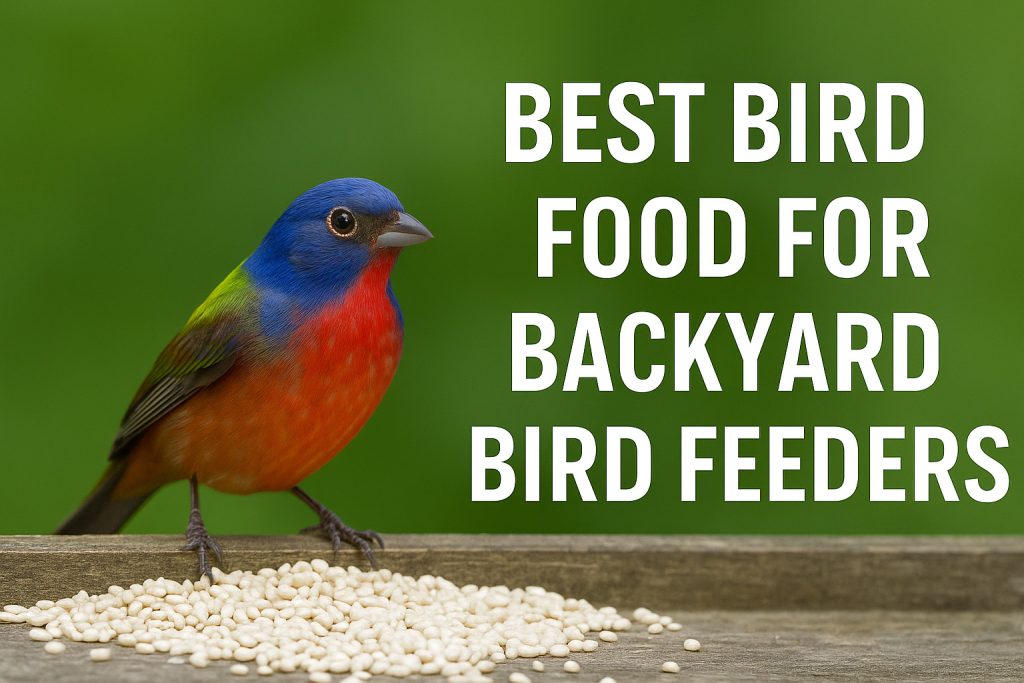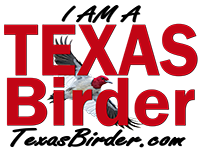
One of the questions I am asked most often–right after “What’s that bird?”—is what food to use in backyard bird feeders that will attract more birds.
For many people, this may seem to be a very simple matter. They merely go to Tractor Supply or a local feed store and buy one of the simple mass produced commercial birdseed mixes. While these mixes usually have a wide variety of different seeds, they often contain both poor quality seeds and seeds that do not always attract the types of birds most people want at their feeders. Some of these mixes are only a step above “chicken scratch.”
Unless your goal is to feed squirrels, grackles, and pigeons while your favorite birds watch from a distance, this seed is not a good choice.
But if you want to attract beautiful, vibrant songbirds like Painted Buntings, Indigo Buntings, and Carolina Wrens—as well as the usual beautiful yard birds found in Texas, such as Blue Jays, Northern Cardinals, Chickadees, Titmice, and various Finches—you need to be a little more strategic.
Let’s break it down.
Not All Birdseed is Created Equal
While those giant bargain bags of mixed seed might look like a good deal, most of them are stuffed with fillers such as milo, cracked corn, and wheat, which birds toss aside with broad sweeps of their bills. These seeds will fall to the ground along with many of the more desirable types, leaving few seeds in the feeders.
You didn’t spend all that money on nice feeders just to have the seeds mostly end up on the ground. That is to say nothing of wasting money on seeds that the desired target birds for your yard will not eat. All of that money that people seem to be saving by purchasing cheap seeds turns out to be a waste.
The Holy Grail: Black Oil Sunflower Seed
If you’re going to stock only one type of seed, make it black oil sunflower. It’s the go-to for almost all backyard birds.
Why it works:
- Thin shells (easier to crack)
- High fat and protein content
- Universally beloved by birds like cardinals, chickadees, titmice, finches, and woodpeckers
Put it in a tube feeder or platform feeder.
The Secret Weapon: White Millet
Want to attract Painted Buntings and other small, beautiful birds? Stock up on white millet.
Pro tip: Use it in tray feeders (or scatter it lightly in low feeders) to draw in Indigo & Painted Buntings, finches, sparrows, and other small species. And when those stunning buntings arrive each spring? All of your neighbors will be jealous.
Other Crowd Favorites
Here are other seeds that you will find great to have for your birds:
- Nyjer (Thistle Seed):
Ideal for goldfinches and Pine Siskins. There are feeders with tiny holes and feeder socks that are made for this type of seeds. - Peanuts (unsalted!):
Titmice, Blue Jays, and woodpeckers will flock to yards with these nuts. Use a peanut feeder or a tray. - Suet:
Fat cakes packed with goodies. Birds like wrens, woodpeckers, and nuthatches love it—especially in cooler months. - Mealworms (live or dried):
Perfect for bluebirds, robins, and chickadees. A protein boost in spring that is effective for nesting birds.
Feeders: Not Just Decorative Accessories
Matching food to feeder is the key to attracting birds and making it convenient for them to use.
Feeder Pairing 101:
- Tube feeders = sunflower and safflower
- Tray feeders = white millet, peanuts, mealworms
- Mesh feeders = Nyjer
- Suet cages = (you guessed it) suet
And please, clean your feeders every 1–2 weeks. Moldy seed and funky suet are detrimental to your bird’s health. You do not want to spread diseases that can contaminate dirty feeders.
Homemade Bird Food: Bark Butter, Texas-Style
Want more bird activity? Make your own bark butter.
Here is my Simple Recipe:
- 1 part creamy peanut butter
- 1 part lard or suet
- 1.5 parts cornmeal
- 1 part birdseed, oats, or chopped nuts
Mix it, smear it on a tree trunk, pine cone, or almost any surface. Chickadees, woodpeckers, and wrens will thank you.
Bird Buffet Tips by Season
- Winter: Focus on suet, black oil sunflower, and peanuts.
- Spring: Break out the white millet, mealworms, and oranges & grape jelly for orioles.
- Summer: Keep things clean and continue sunflower and millet blends.
- Fall: Add peanuts and keep a suet cake on standby for woodpeckers stocking up for winter.
Final Thoughts: Feed Smart, Not Filler
Bird feeding in Texas isn’t about dumping a mystery mix into a feeder and hoping for the best. It’s about knowing your audience, serving the quality, desirable food, and enjoying a daily show of incredible Texas birds.
Stick to high-quality seeds like black oil sunflower, white millet, peanuts, and Nyjer. Avoid filler blends. Clean your feeders. And keep an eye out—because when that first Painted Bunting shows up, it’ll all be worth it.

More Stories
What Are Feathered Doppelgangers?
Ruby-throated Hummingbird Vs. Black-chinned Hummingbird IDs
Downey vs. Hairy Woodpeckers IDs